Ponyo
Hayao Miyazaki has established himself as the world's foremost practitioner of cell animation with such highly regarded titles as Howl's Moving Castle, My Neighbour Totoro and the Oscar-winning Spirited Away to his name. Earlier this year, I braved the half term holidays and went to the cinema to see Miyazaki's latest film: Ponyo. Fortunately, it was up against a big 3-D family film (I forget which) so the cinema was surprisingly empty. It was easily the best film of that week and has remained as one of the best releases of this year, despite stiff competition from the 'big films' that dominated the awards season.
As with most, if not all, Miyazaki films, it is rooted firmly in a fantasy setting, albeit one with plenty of things that are recognisably real. As such, you have to suspend disbelief and just go with it as, if you watch these films with the mindset of 'oh, that would never happen', you're in the wrong movie! Ponyo is set in a small Japanese coastal town where Lisa works at a daycare centre for the elderly and almost single-handedly looks after her five-year-old son Sosuke, who goes to the school next door. Together, they manage to stay in regular radio and Morse code contact with his father, a ship's captain, who is away at sea.
One morning before leaving for work and school, Sosuke is busy playing by the sea despite his mother's calls him to hurry up and get in the car. When he is just about to heed Lisa's call, he notices a goldfish trapped in a jam jar and, hard as he pulls, the fish stays resolutely stuck. Finally, in desperation, Sosuke brings the jar onto dry land and hits it with a rock, smashing the jar and freeing the fish which lies very still, making Sosuke fear that it is dead. Putting this seemingly lifeless goldfish into a bucket, Sosuke is surprised to see that it not only moves a bit, but licks his thumb where he cut it on the rock.
Unbeknownst to Sosuke, the goldfish, which he names Ponyo, is actually the daughter of a powerful wizard and King of the ocean, Fujimoto, who lives under the sea and hates humans for the way they pollute his home. Ponyo has run away from home and Fujimoto wants her back, so dispatches waves of water to reclaim the runaway. Distraught, Sosuke is desperate to have his fish back although it is weird, has a taste for ham and a face that causes one of the seniors to shriek in disgust at it. As Ponyo has tasted human blood, her DNA has been altered and she is able to use her magical powers to sprout arms and legs, all this to the utter dismay of her father. Whilst he is fuming which causes the sea to rage, Ponyo, with the assistance of her younger sisters, escapes again and runs after Sosuke and Lisa who are driving home through the storm. This is no ordinary chase as Ponyo is running on top of a giant wave which is made up of giant fish (it brought to mind the wave of horses in that brilliant Guinness commercial directed by Jonathan Glazer).
Now a fully fledged human, Ponyo and Sosuke get on really well but there is something very wrong outside as the sea continues to rage and boats begin disappearing, including that which Sosuke's father is captaining. It turns out that Ponyo's magical powers have disrupted the balance between land and sea, bringing the moon dangerously close to the Earth and causing the sea levels to rise drastically.
The only way to solve this is for Ponyo, who has become increasingly lethargic, to decide whether to become a human and forego her magic powers or join her family in the sea. Whatever she decides, Sosuke must promise to love her in the shape she chooses to live to prevent the world from ending.
I must admit to going into Ponyo with high hopes, such as been my previous experiences with, and love for, Miyazaki's films and the entire output from Studio Ghibli. Needless to say, I was not disappointed in any way, shape or form at the cinema and loved the film from beginning to end and liked it even more watching it at home. I'm not sure why, but I was probably more comfortable as the movie was shown in one of the small screens at Cineworld, so I was sitting right at the front which I've never found conducive to comfort. Whatever the reason, I loved Ponyo from first minute to last and even left it playing through the credits because of the wonderfully catchy song which plays over the end credits -- it's not often that happens.
The debate will obviously rage as to where Ponyo ranks amongst the best of Miyazaki's work and, to be honest, I really couldn't say. This has all the elements of the typical Miyazaki film: children growing up, the importance of family, having respect for the environment and the power of love. It is probably a more enjoyable film than Spirited Away, the film that most consider to be his masterpiece, and I consider it to be up there with My Neighbour Totoro, Howl's Moving Castle and even Princess Mononoke. This is a very classy piece of animation with a beautiful story, terrific animation and a harsh reminder that you don't need all of the whizz bang effects of digital animation (3-D or otherwise) to keep you utterly involved for the duration of the film which leaves you emotionally exhausted at the end. The phrase 'suitable from ages 8 to 80' springs to mind, but I would contend that Ponyo would appeal to children younger than eight years old (Miyazaki wrote it for five year olds) and adults older than eighty. It is a marvellous piece of work and proof that, despite his years, Miyazaki has lost absolutely nothing and is still a master animator.
The Disc
Extra Features
These are broadly split into two categories: those made for Japanese television and those specifically made for the American DVD/BD release.
The introduction with Kathleen Kennedy and Frank Marshall (both US producers) is quite interesting and although it does come across a little like an EPK piece, still contains some information which is slightly revealing and tells you about how the whole process came about. They pop up again in different Featurettes, adding more information on talking about such things as casting. You not only have footage of the US voice recording sessions, but the Japanese recordings as well and this is interesting to see the difference in how they were done, with Miyazaki very hands-on, giving real direction to the actors telling them how to read their lines, which words to emphasise and what the character is like. Whilst the US 'behind the microphone' featurette is only six minutes long, the Japanese one clocks in at a healthy 25 minutes so you get a greater feel of how this was done in Studio Ghibli than in the US.
There are short, odd little pieces, such as the revelation that Miyazaki, rather than making a film about a children's nursery, decided to build one, Japanese trailers and TV spots plus the Japanese video the theme song. The real meat comes from Japanese TV and features a half-hour interview with Studio Ghibli producer Toshio Suzuki who actually talks about when he and Miyazaki considered calling it a day and shutting the studio down, an interview with Hayao Miyazaki in which he talks about the children of today and how they are very different and that it's not their fault, but their parents' and grandparents' responsibility.
There is a fairly lengthy (seven minutes) piece on scoring the film and how the music and sound effects were done, including the laborious process to make sure that the underwater voices sounded right, with the correct resonance -- as Miyazaki says after the first screening "two years work for 101 minutes of film -- that's filmmaking"! There is also a lengthy piece on the 'Five Geniuses Who Created Ponyo' which looks at the art director, composer, director and other members of the crew who are Studio Ghibli mainstays.
All in all, this is a very comprehensive extras package that includes about two hours of material and shows you just about everything you need to see about how the film was made, from initial sketches to voice recording.
The Picture
Hayao Miyazaki has a pretty distinctive style which is similar to some anime series, but you know when you're watching a Miyazaki film because of the attention to detail, vibrant colours and brilliant fantasy sequences. In the case of Ponyo, when you see a girl that used to be a fish sprinting along on top of a wave that seems to comprise giant fish, you know you're in Miyazaki territory!
The picture is beautifully clear, with crisp edges, vibrant colours and deep contrast levels. There is absolutely no way that this could be improved and the word 'flawless' may be bandied about it too much, but I can't think of any other to describe this transfer.
The Sound
I'll get to the technical specs in a minute, but I think a word or two about the voice acting is necessary first. When watching a live action Japanese film (or a film from any other foreign territory), I always choose the native language rather than the English dub but the one exception to this is animated films, especially these. As John Lasseter has supervised the English language version, the whole disc is designed in English, with English credits and menus. I saw the film in English at the cinema and thought the voice casting was superb, with Tina Fey well cast as Lisa, Liam Neeson as Fujimoto and Noah Cyrus (Smiley Virus' little sister) and Frankie Jonas (the youngest Jonas brother, who isn't in the group) doing a terrific job with Ponyo and Sosuke respectively -- whatever you may think of them personally, there is no doubt that they do a great job of putting all the emotion and energy into the characters that is necessary for a film like this. The Japanese language track is also extremely good and the casting is equally impressive but if subtitles aren't your thing and you'd rather watch the film without having to read the dialogue, at least the voices match the characters extremely well.
The soundtrack is wonderfully balanced with crystal clear dialogue and surrounds that are kept constantly busy with ambient sounds such as raindrops on the windows, wind and the sea. When there is a thunderstorm or something very loud, the soundstage really impresses with a beautifully mixed and delivered soundtrack that puts you right at the centre of the action. The film is also quite brilliantly scored and the music carries you along and helps to heighten the emotions and really underscore the more emotionally charged scenes.
Oddly, for a disc that is so clearly geared towards an English speaking audience, the Japanese has the best soundtrack available with a stunning DTS-HD Master Audio 6.1 track that delivers the dialogue perfectly and has plenty spare for the magnificent score. The English LPCM 5.1 surround track is probably just as good and I couldn't fault it in any way. There are also stereo options in both English and Japanese and, whilst these are very good at presenting the dialogue, they are found wanting in the more action oriented scenes and the score doesn't swell around the room as it does with the two surround options.
If you want to watch it in Japanese, the subtitles are subtitles rather than dubtitles so they match the Japanese script rather than the English one which, in my opinion is actually better written.
Final Thoughts
Ponyo is an absolutely brilliant film, and utterly enchanting watch that has an environmental message if you want to see it, but it doesn't ram it your throat, a smart message about the importance of family and added responsibility of growing up. Some films lose something on repeated viewings whereas the very best improve the more times you watch them and this is the case with Ponyo. Although I thought it was excellent at the cinema, I thought it was even better the second (and third) time around. It is a visually dazzling film that just shows that there is life in cell animation and films don't have to be digitally animated or converted to 3-D to be an utterly engrossing experience.
With a very good extra features package and sublime AV quality, Ponyo is a terrific set and is definitely worth a place in your home, whether on DVD or Blu-ray Disc. If you're unsure whether to upgrade to Blu-ray technology, this is a Combi-pack with both a BD and DVD (and available for only a few pounds more than the DVD) so you can buy for now and have the DVD to watch whilst owning the BD for when you decide to make the jump. This package will also suit families where the Blu-ray player is in the living room but your child might want to watch it in their bedroom on the DVD player.
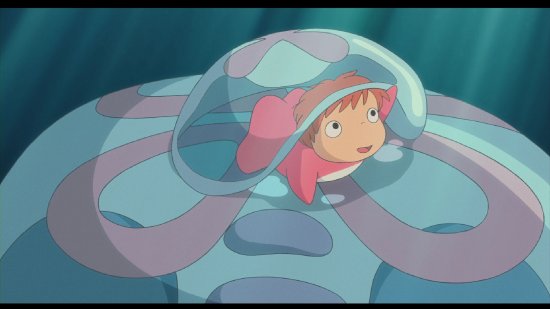
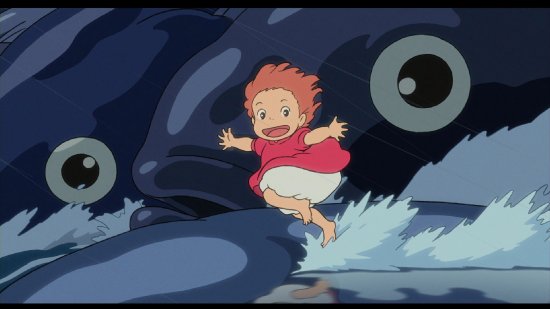
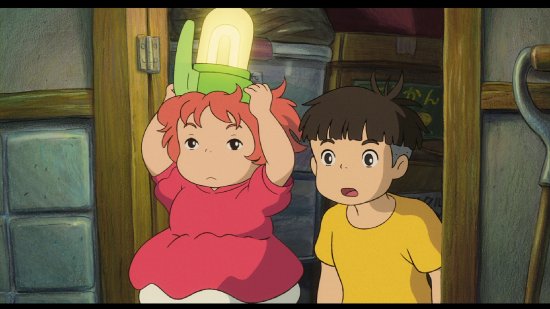
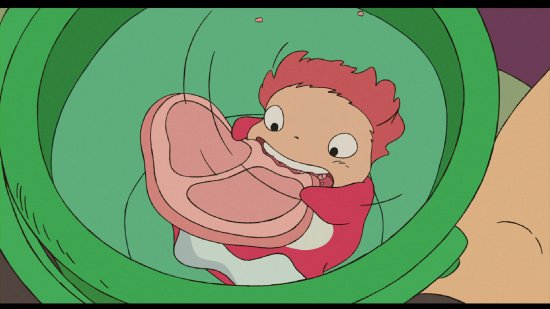
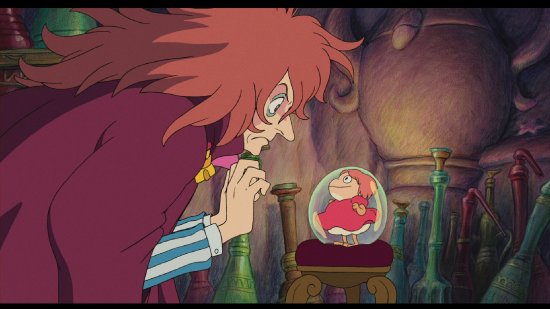
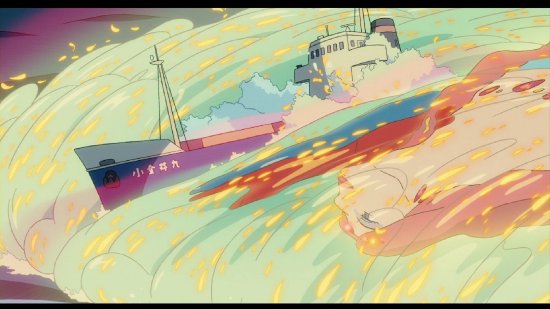
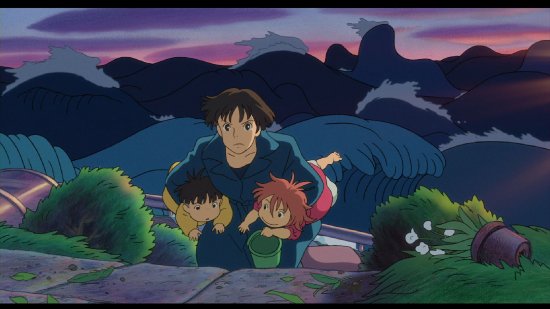
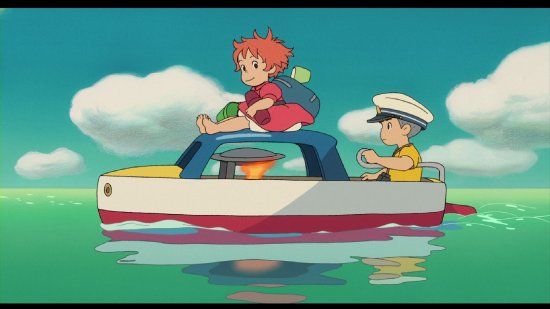
Your Opinions and Comments
Be the first to post a comment!